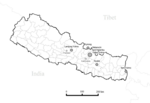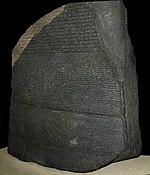WikiJournal of Humanities/Volume 2 Issue 1
WikiJournal of Humanities
Open access • Publication charge free • Public peer review • Wikipedia-integrated
|
VOLUME 2 (2019)
ISSUE 1
Previous issue
Author: Hannah Holland
Hilda Rix Nicholas (née Rix, later Wright, 1 September 1884 – 3 August 1961) was an Australian artist. Born in the Victorian city of Ballarat, she studied under a leading Australian Impressionist, Frederick McCubbin, at the National Gallery of Victoria Art School from 1902 to 1905 and was an early member of the Melbourne Society of Women Painters and Sculptors. Following the death of her father in 1907, Rix, her only sibling Elsie and her mother travelled to Europe where she undertook further study, first in London and then Paris. Her teachers during the period included John Hassall, Richard Emil Miller and Théophile Steinlen. [...] doi: 10.15347/WJH/2019.004
Author: Christine Meyer
The themes encompassed in African-American writer Maya Angelou's seven autobiographies include racism, identity, family, and travel. Angelou (1928–2014) is best known for her first autobiography, the critically acclaimed I Know Why the Caged Bird Sings (1969). The rest of the books in her series are Gather Together in My Name (1974), Singin' and Swingin' and Gettin' Merry Like Christmas (1976), The Heart of a Woman (1981), All God's Children Need Traveling Shoes (1986), A Song Flung Up to Heaven (2002), and Mom & Me & Mom (2013). [...] doi: 10.15347/WJH/2019.003
Author: Lauren Gawne
Yolmo is a Tibeto-Burman language spoken in Nepal. Also known as Helambu Sherpa, it is a Tibetic language. This article gives an overview of the language, including information about the dialects spoken, history of documentation, and a grammatical overview. The grammatical overview brings together work on different dialects, providing an outline of the sound system, noun phrase, verb phrase and clause structure.
doi: 10.15347/WJH/2019.002
Author: Andrew Dalby
The Rosetta Stone (British Museum EA24) is a granodiorite stele, found in 1799, inscribed with three versions of a decree issued at Memphis in 196 BC during the Ptolemaic dynasty on behalf of King Ptolemy V. The top and middle texts are in Ancient Egyptian using hieroglyphic and demotic scripts, respectively, while the bottom is in Ancient Greek. As the decree has only minor differences between the three versions, the Rosetta Stone proved to be the key to deciphering Egyptian hieroglyphs. [...] doi: 10.15347/WJH/2019.001
|

WikiJournal of Humanities
www.WikiJHum.org On social media
|





